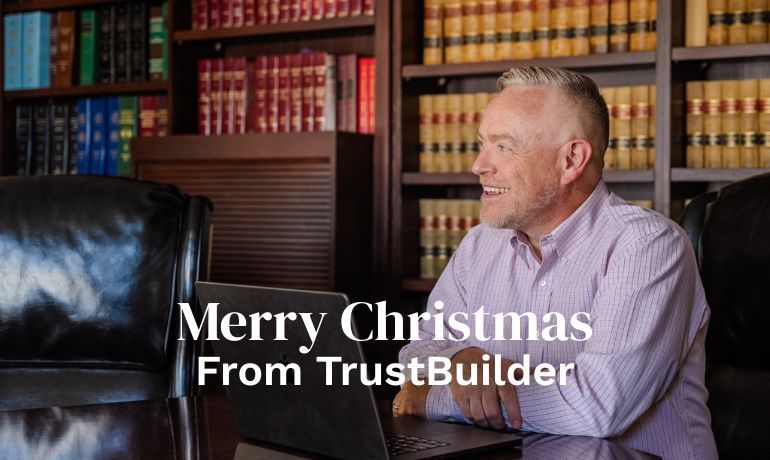How Your Business Can Cultivate a Trust-Building Mindset
Trust is a critical asset in any relationship, and that is also true in organizational relationships. Research consistently demonstrates that, though the value of trust is rarely conscientiously measured in high-trust corporate environments, it nevertheless manifests itself in high morale, enhanced productivity, and increased employee engagement and retention. These benefits correspondingly result in better performance for the company.
What Does Trust Look Like in Practice?
Employees who trust their colleagues, the organization they work for, and the managers they answer to are more likely to share ideas, take on responsibility, provide transparency, and deliver a better customer experience. A high-trust corporate culture builds employee confidence, instilling the conviction that the leaders of the organization are truly "there" for them.
In contrast, low-trust environments do the opposite. In low-trust environments, employees are likely to "go along," reluctant to take risks or accept more responsibility because of uncertainty about how their initiatives will be received. When trust is lacking, employees have lower job satisfaction and, in worst-case scenarios, may even engage in destructive cynicism that further erodes morale, demotivating performance for themselves and others.
How do you counteract negative trust indicators? That's the focus of
TrustBuilder. TrustBuilder helps organizations identify trust issues, proactively transform their culture, and eliminate the individual behaviors that undermine trust. Often, lack of trust is not because personnel are untrustworthy but because organizations do not have built-in practices designed to grow and inspire trust. TrustBuilder can change that.
Our strategic approach to trust-building is based on the conviction that trust should not merely represent an aspirational, feel-good goal for companies but a concrete business imperative that directly impacts their success.
Evidence-Based Strategies for Implementing a Trust-Centered Framework
Building trust cannot be achieved only through mission statements and management seminars on the importance of trust. Here are some actionable practices that organizations can use to promote a high-trust culture, whether the organization is a nonprofit, corporation, sports team, or volunteer church committee.
1. Institutionalize Transparency in Communications from Leadership
Trust cultivation begins at the executive level; what leaders do sets the tone for everyone down the chain of command. Consequently, organizations that implement structured transparency protocols—including regular financial updates, strategic roadmap discussions, and forthright acknowledgment of challenges—build foundations for enduring credibility between employees and the C-Suite. When leadership demonstrates informational openness, employees are more loyal to their leadership. Transparency gives employees the information they need to understand with a high level of confidence how their work aligns with corporate objectives.
2. Establish Formal Feedback Mechanisms
Successful organizations systematically implement and utilize multidirectional communication channels. Initiatives such as structured quarterly feedback sessions, digital suggestion platforms, and facilitated team dialogues provide a useful infrastructure framework for creating a feeling of psychological safety among staff.
The most effective trust-building programs prioritize collecting employee perspectives and demonstrating organizational responsiveness to the concerns identified by employees. In short, when employees see concrete evidence that their concerns are heard and responded to, they know that the organization values their opinions.
3. Implement Delegation Frameworks that Promote Accountability
Research indicates that excessive oversight-–often called “micromanagement”—significantly undermines organizational trust. Consequently, forward-thinking companies that want to counteract this trend will instead implement clearly defined authority parameters that delineate each manager's decision-making sphere and let those managers exercise that authority.
When employees are given authority and autonomy, they feel encouraged to take calculated risks. They are confident that the organization will stand behind them and trust them to make the right call without second-guessing or countermanding their decisions.
This strategic delegation approach cultivates innovation while maintaining appropriate governance structures. It also enables the organization to identify those individuals who exhibit good judgment, confidence, and courage, giving them better insight into who is ready to accept and exercise greater responsibilities within the organization.
4. Develop Consistency through Standardized Processes
Organizational trust also depends on reliability and fairness. In practice, this means implementing standardized workflows across all departments, transparent decision-making criteria, and consistent policy enforcement for all staff to create an environment of predictability and accountability. When organizations demonstrate unwavering adherence to established principles, stakeholders develop confidence in the organization's integrity. It also fosters a culture in which employees exhibit and practice personal integrity.
5. Create Recognition Systems with Measurable Metrics
Strategic recognition goes beyond casual acknowledgment or lip service. Organizations seeing the greatest trust benefits implement structured recognition programs with defined achievement criteria, regular review cycles, and meaningful rewards aligned with corporate values. These formalized appreciation systems reinforce desired behaviors (and unobtrusively discourage undesired behaviors) while building a culture of mutual respect among employees.
6. Institute Professional Development Programs
Trust-centered organizations view talent development as a strategic investment rather than an operational expense. By implementing individualized development programs, formal mentorship structures, and clearly articulated advancement pathways, companies demonstrate their tangible commitment to employee growth and success. This investment perspective fosters organizational loyalty, enhancing the company's ability to retain valued contributors.
7. Establish Robust Conflict Resolution Protocols
Friction will inevitably occur because complex organizations are composed of people with diverse backgrounds and viewpoints. Companies that implement structured mediation processes, anonymous reporting mechanisms, and fair investigative procedures can maintain a high-trust environment despite challenging situations. By emphasizing solution-oriented approaches rather than punitive measures, organizations preserve psychological safety while addressing valid performance issues.
Implementing a Trust-Centered Transformation Initiative
Our TrustBuilder consulting team develops customized trust-building frameworks tailored to your organization's specific challenges, cultural context, and strategic objectives. Our proprietary assessment methodology probes deeply into the trust issues that may be affecting your personnel and identifies existing trust gaps. Using that information, we design a program that can help you implement targeted interventions that can build or rebuild trust in a way that yields measurable results.
Would your organization benefit from a complimentary trust assessment? Contact our advisory team to
schedule an executive briefing on implementing our evidence-based strategies within your organizational context. Together, we can develop a strategic roadmap for building sustainable competitive advantage through enhanced institutional trust within your organization.
Recent Posts


![SYNTHESIS [2026] in light blue text.](https://lirp.cdn-website.com/f969fb45/dms3rep/multi/opt/TB_Horizontal_White-b3af8ef2-1920w.png)








